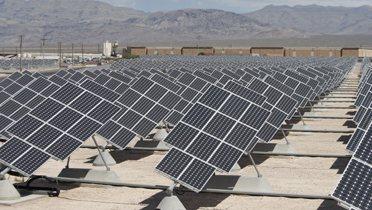Last week I mentioned that the America COMPETES Act is up for reauthorization, and suggested that Congress should innovate a bit as it updates a key vehicle for stimulating innovation in the original innovation nation. Along these lines, I noted that Rob Atkinson has pulled a lot of the right ideas together in a recent brief but added that a few other ideas need inclusion. Now I want to elaborate, and suggest why Congress should give America COMPETES a regionalist cast by adopting two key ideas of ours: funding for competitive grants to stimulate regional innovation clusters (such as we proposed here) and for a truly region-oriented network of energy discovery-innovation institutes (e-DIIs) or consortia such as we propose in this paper.
Start with the problem. One of the great flaws of U.S. innovation policy today is that it pays too little attention to the practical commercialization of technology and is still based on what the economist Greg Tassey calls the “black box model” of growth that assumes desirable goods and services magically appear as a result of the combination of R&D spending with the traditional inputs of capital and labor. This “magical” or linear model is misleading because it assumes, as Tassey and Atkinson observe, that basic research gets easily or almost automatically translated into commercial activity. But commercialization doesn’t happen easily. In fact, as Atkinson and our colleague Howard Wial have written, the real-life commercialization process is jam-packed with complications, including information breakdowns, institutional inertia, coordination and communication problems, and poorly aligned incentives. Add to that the disaggregation of the development system, through the globalization of the supply chain, and it’s clear that U.S. innovation activities are diffusing rather than cohering.
All of which means the nation needs to address the growing fragmentation and diffusion of its innovation processes as recasts its innovation policies and reauthorizes America COMPETES. How should it do this? Part of the push should entail a more direct attack on some of the specific institutional problems that hobble commercialization. That’s the point of Atkinson and Wial’s proposed National Innovation Foundation, which would catalyze industry-university research partnerships, expand technology promotion, and fund state-by-state university-industry-government technology diffusion centers as well as develop and champion a true U.S. innovation strategy.
But another portion of a reinvigorated U.S. innovation campaign ought to be a true regional strategy. Regions are where it’s at as far as linking and aligning disparate inputs and actors. Regions concentrate and combine what matters through powerful agglomeration effects. In short, innovation clusters and related regional strategies hold out a powerful way to address the fragmentation, conflicting interests, and diffusion of actors and institutions that currently undercuts U.S. innovation and commercialization efforts.
And so Congress and the Obama administration should move to upgrade the nation’s simplistic “black box” approach to innovation by leveraging in America COMPETES the power of regions—via local innovation networks, supply chain relationships, key institutions, and industry clusters–to intensify the exchanges, collaborations, and alignments necessary to innovation.
Along these lines it’s good to see that the bill language circulating this spring calls for keeping the Department of Energy’s (DOE’s) Office of Science, the National Science Foundation, and the National Institute of Standards and Technology on track toward a doubling of their total budgets. And it’s also good to see called out three important DOE programs for intensifying research collaborations in the energy area: Energy Frontier Research Centers (EFRCs); the Advanced Research Projects Agency for Energy (ARPA-E); and Energy Innovation Hubs. Each of these would spur collaborative, “use-inspired” research in U.S. regions.
However, it is disappointing that the House Science & Technology Committee Subcommittee mark-up of COMPETES embraces only the relatively narrow, top-down energy innovation hub configuration being advanced by DOE. That configuration of the institute idea ignores the more region-oriented, cluster-connected version embodied in Section 171 of the Waxman-Markey American Clean Energy and Security Act of 2009 (ACES) and the soon-to-be-unveiled Senate bill entitled the Regional Energy Grant Innovation Consortia Act, sponsored by Sen. Ron Wyden (D-OR). A better engagement with the nation’s innovation problems might be to authorize the DOE innovation hubs but also to add in a unique regional energy innovation institutes or consortia program as embodied in ACES or the Wyden bill.
What is more, it would be smart for Congress to go the next step and add to America COMPETES a stand-alone regional innovation clusters program such as the Economic Development Administration and other agencies have proposed in their FY 2011 budgets. Such a competitive, “bottom-up” program need not be large. Yet even at a modest sizing such an offering might serve as the catalytic “tail wagging the dog” to the act’s other innovation inputs. Such a program to stimulate local cluster initiatives would have the effect of maximizing the impact of all other federal, state, and local investments in U.S. regions. By stimulating more cluster activity, such a grants program to support regional cluster initiatives would promote exactly the sort of regional interactions that can help link and better align the disparate activities of firms, trade associations, suppliers, universities, community colleges, workforce boards, and multiple federal and other resources.
In this sense, the addition of a modest industry cluster program to the other critical elements of America COMPETES would be an important, low-cost enhancer of focus and performance across the entire sprawling U.S. innovation system. Congress should consider that.
The Brookings Institution is committed to quality, independence, and impact.
We are supported by a diverse array of funders. In line with our values and policies, each Brookings publication represents the sole views of its author(s).






Commentary
America COMPETES: Regionalize It
April 21, 2010